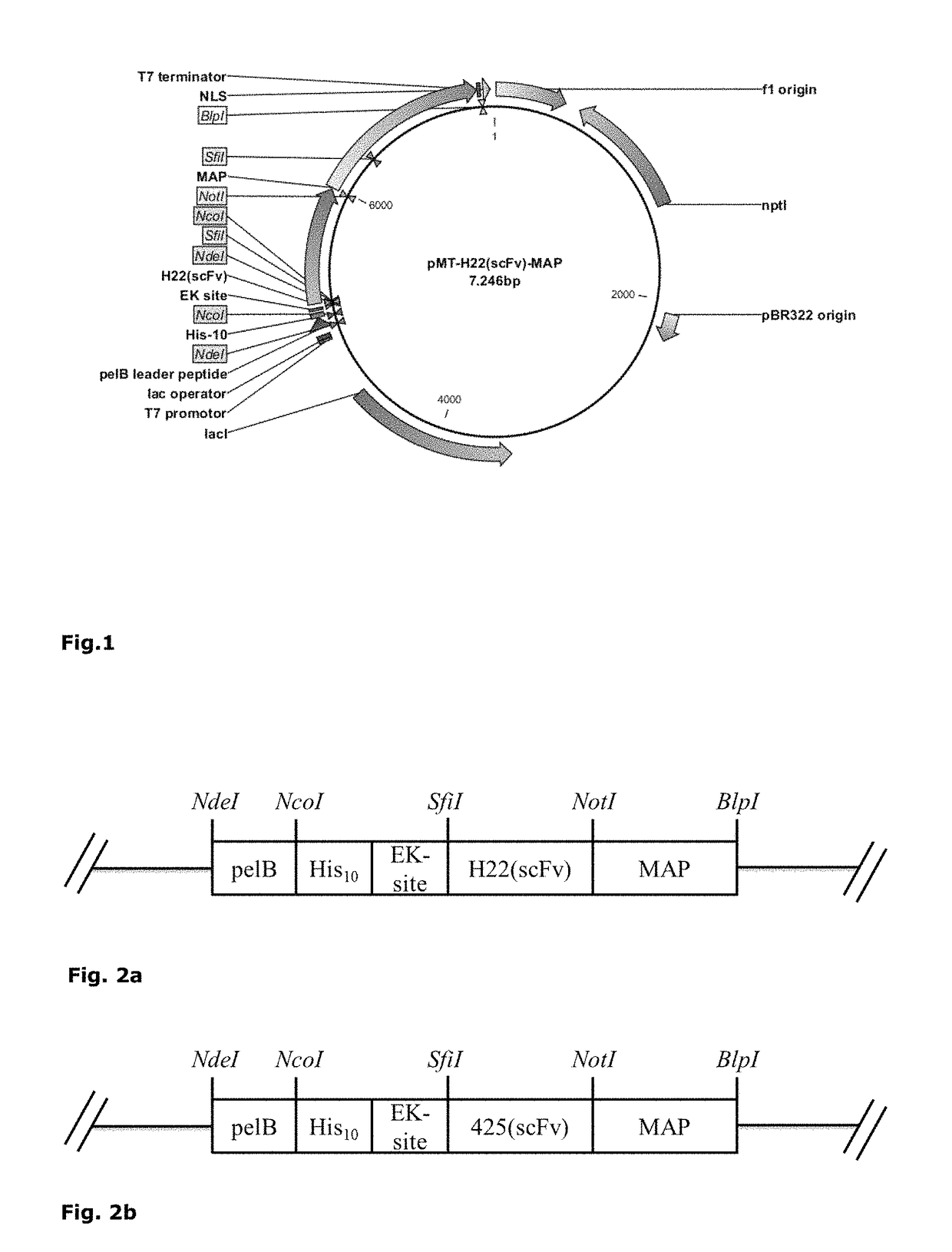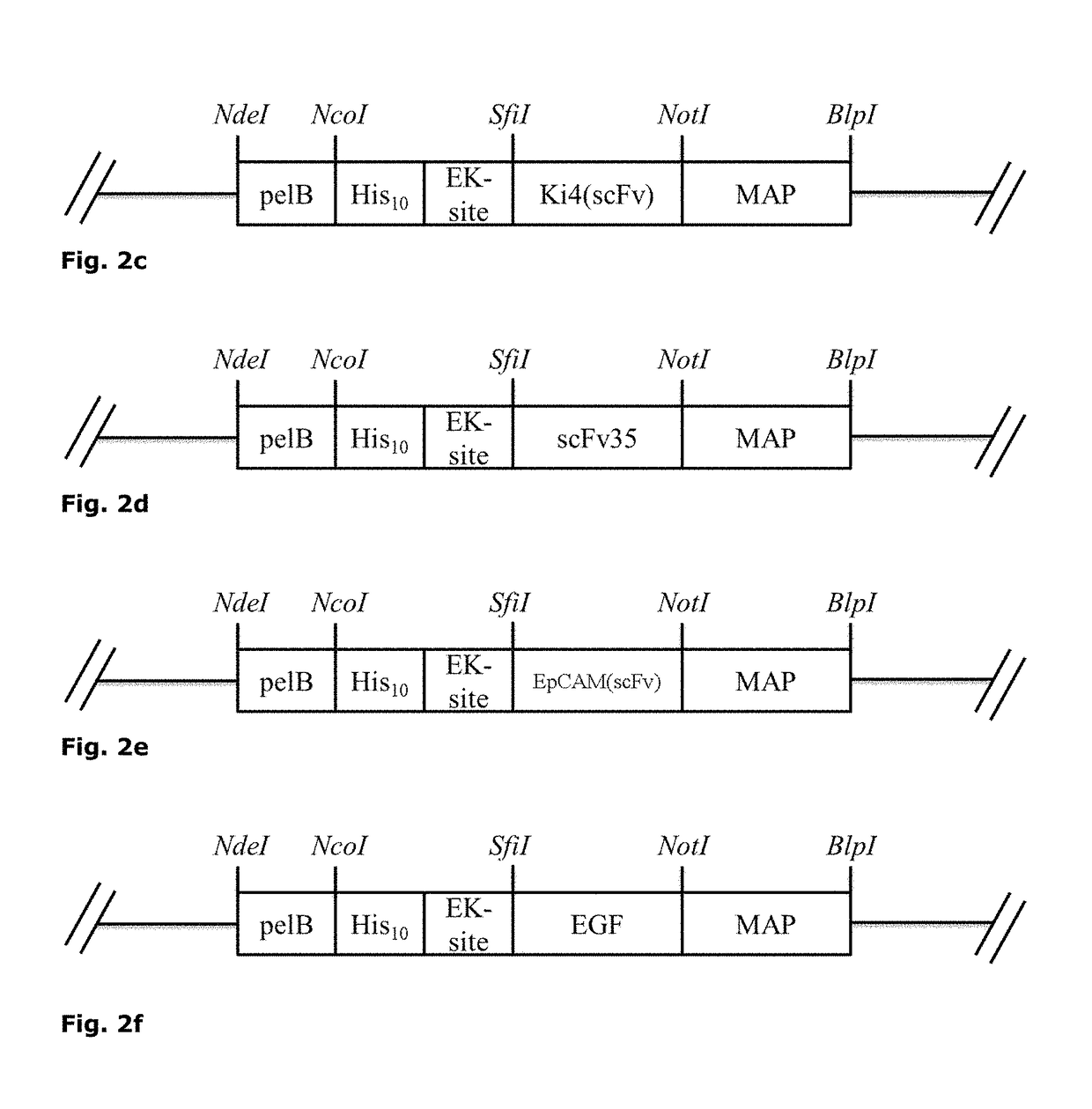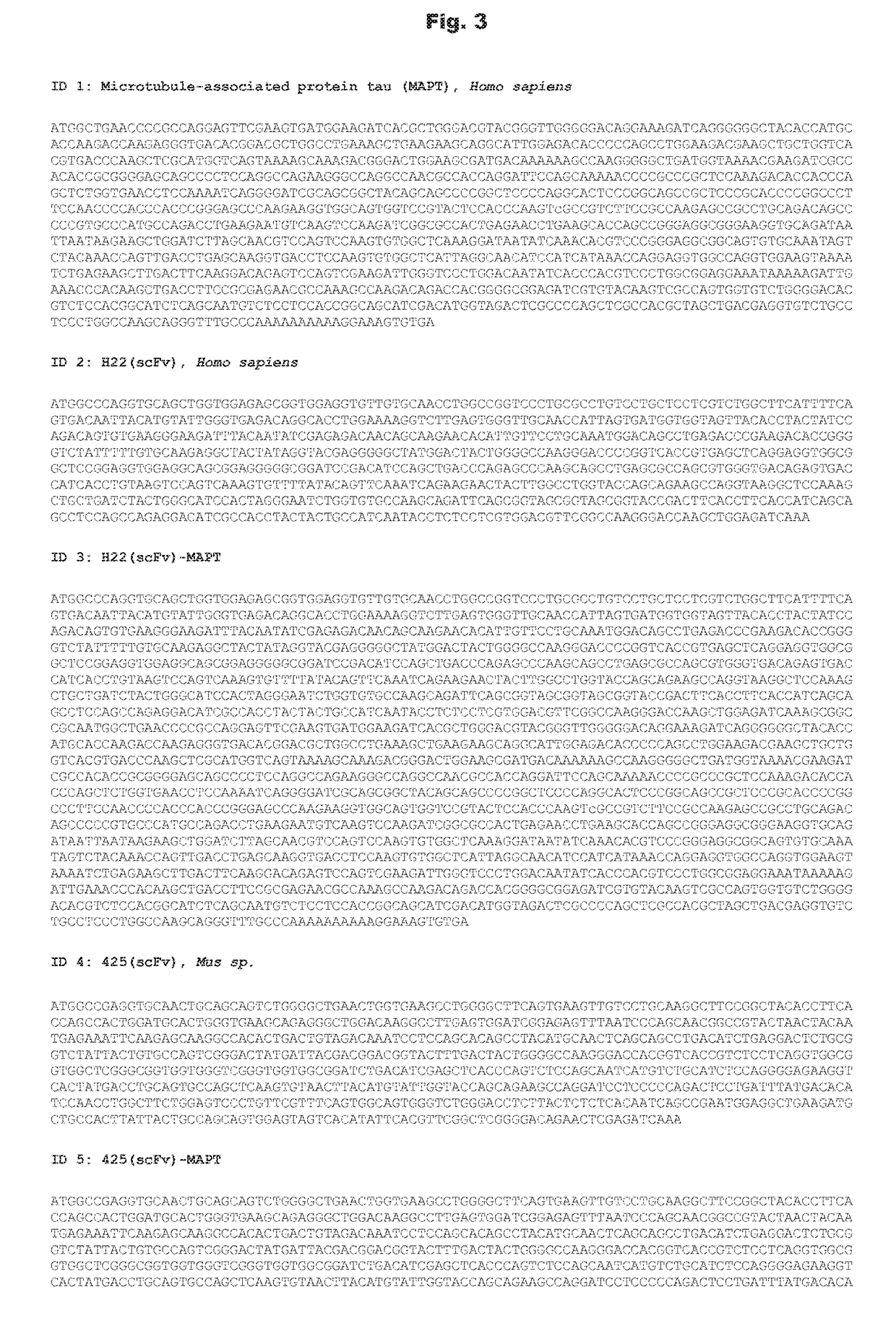Microtubule-modifying compound
a technology of microtubules and compound, applied in the direction of his-tag polypeptides, drug compositions, peptides, etc., can solve the problems of low yield after conjugation, undirected coupling, heterogeneous protein preparation, etc., and achieve the effect of reducing side effects
- Summary
- Abstract
- Description
- Claims
- Application Information
AI Technical Summary
Benefits of technology
Problems solved by technology
Method used
Image
Examples
examples
Construction of Open Reading Frames for Human MAP-Based Cytolytic Fusion Proteins
[0305]Different components A like antibody fragments and natural ligands for receptors including soluble ligands, receptors, chemokines, growth factors or interleukins or fragments thereof were cloned in an open reading frame (ORF) together with different MAPs (component B). The ORF of MAPs was modified with 5′-NotI and 3′-BlpI restriction sites by PCR followed by ligation into a NotI / BlpI-linearized pMT vector already containing the sequence for component A (e.g. H22(scFv)) thus replacing the OFR of ETA (FIG. 1). Furthermore, two point mutations resulting in the removal of two putative phosphorylation sites S156A and S204A and a 3′ nuclear localization sequence (NLS) were introduced into the ORF of MAP by PCR. Complete expression cassettes for MAP-based cytolytic fusion proteins are exemplified in FIG. 2a-f. Successful cloning was confirmed by test digestion and sequencing. The exemplified ORFs are lis...
PUM
 Login to View More
Login to View More Abstract
Description
Claims
Application Information
 Login to View More
Login to View More - R&D
- Intellectual Property
- Life Sciences
- Materials
- Tech Scout
- Unparalleled Data Quality
- Higher Quality Content
- 60% Fewer Hallucinations
Browse by: Latest US Patents, China's latest patents, Technical Efficacy Thesaurus, Application Domain, Technology Topic, Popular Technical Reports.
© 2025 PatSnap. All rights reserved.Legal|Privacy policy|Modern Slavery Act Transparency Statement|Sitemap|About US| Contact US: help@patsnap.com



